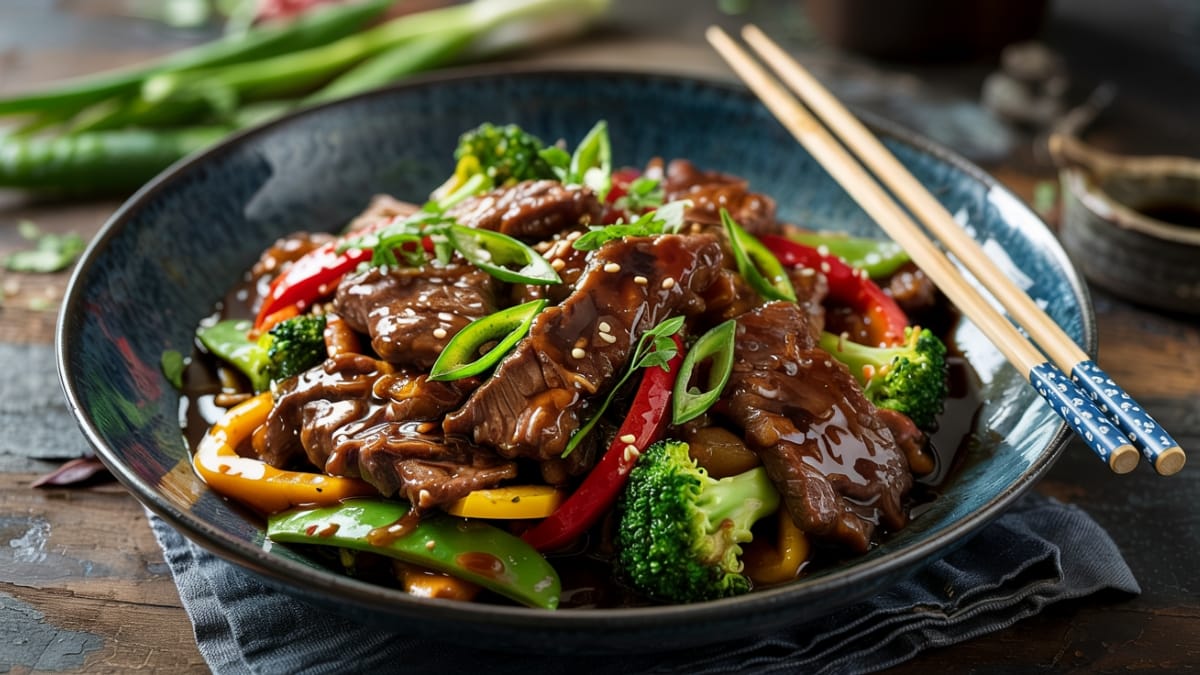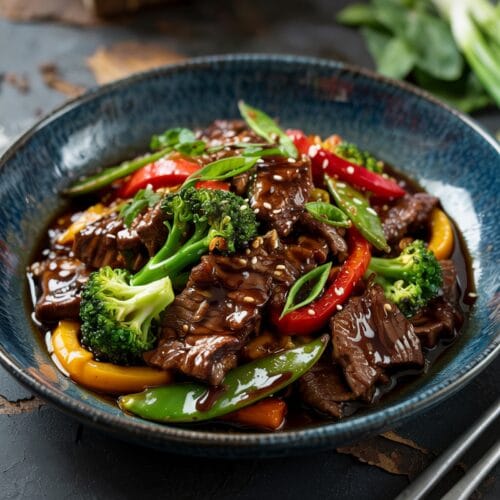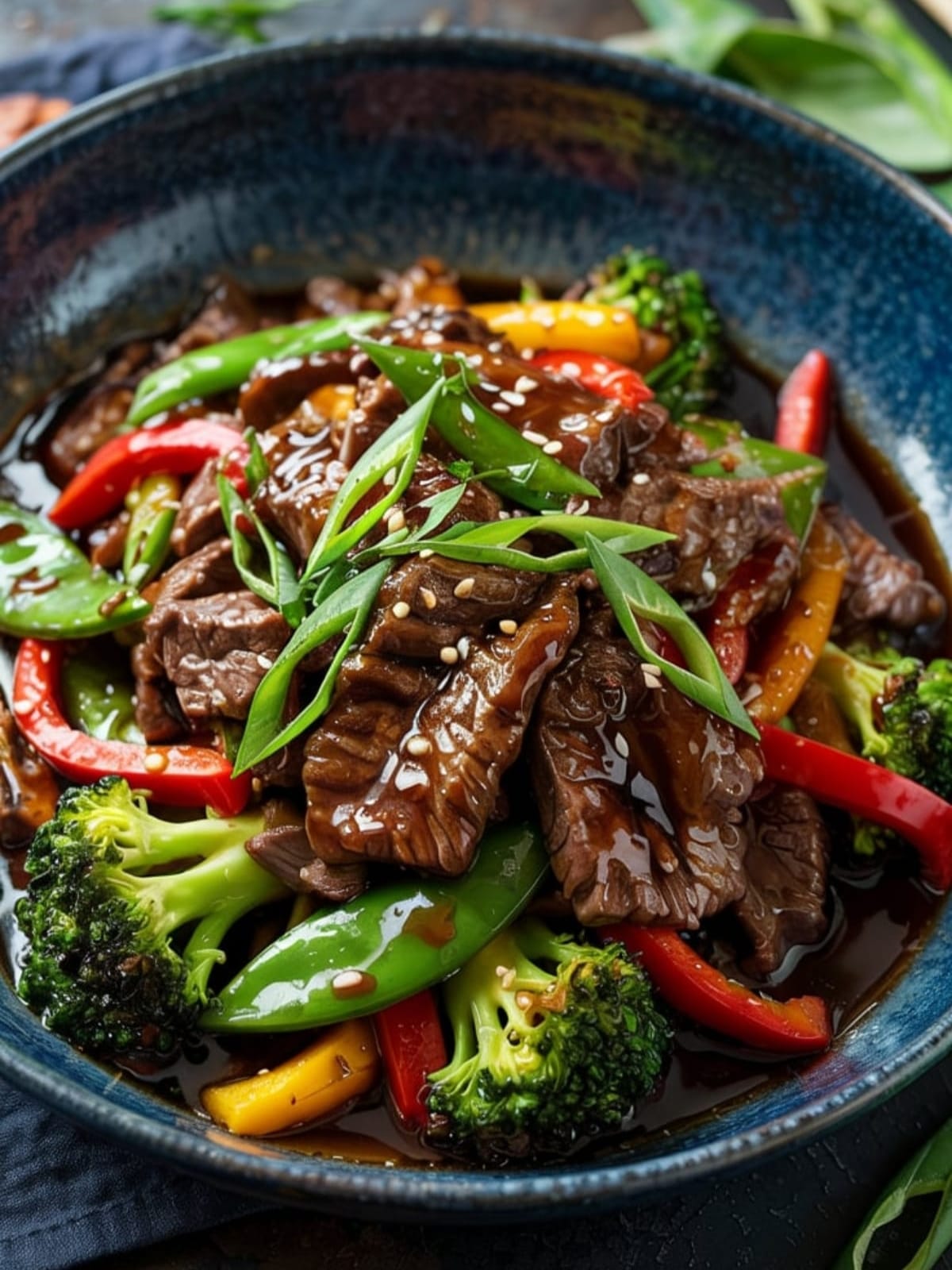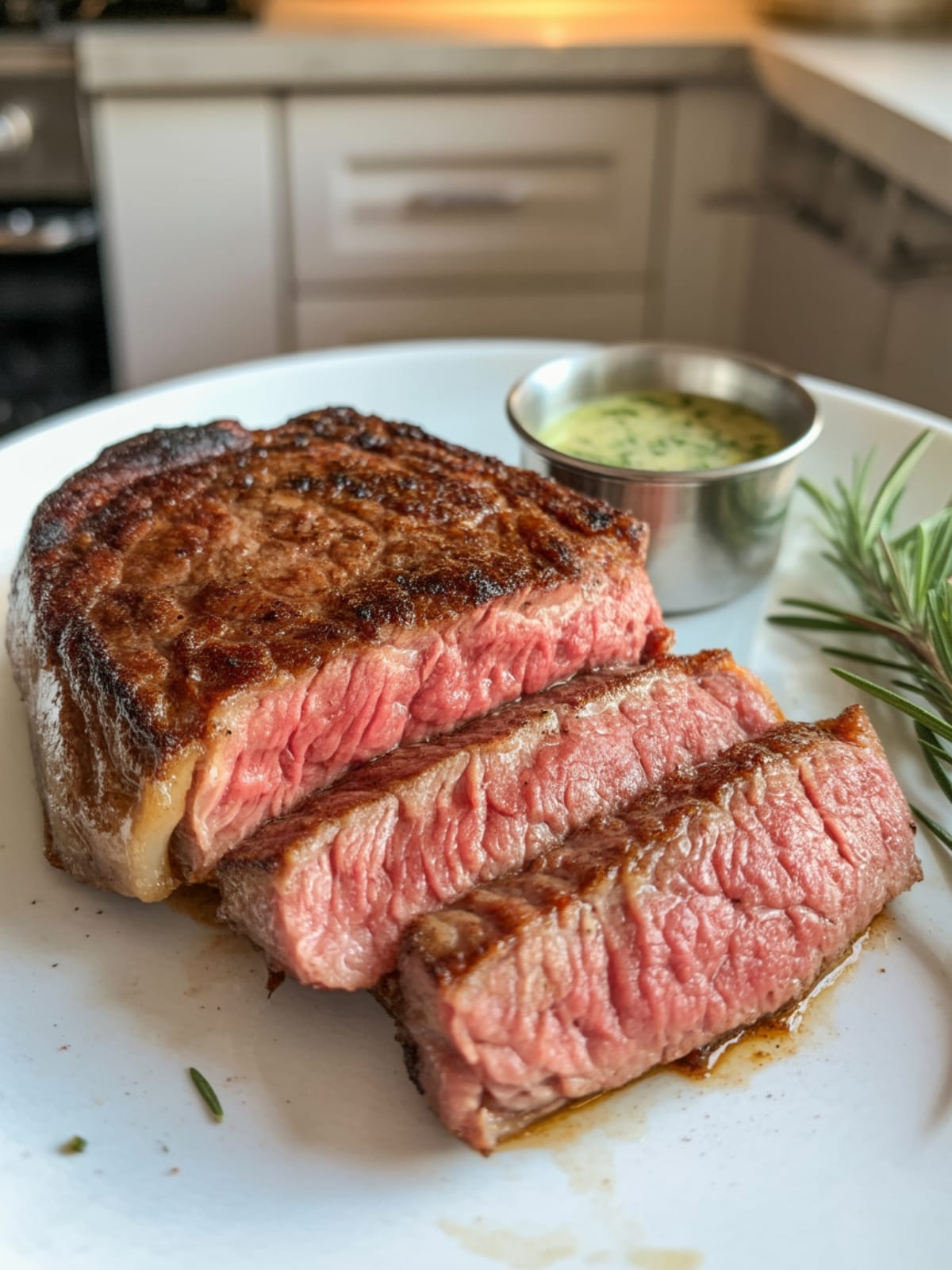Ever stared into your fridge at 6 PM wondering how you’re going to transform random vegetables and that package of beef into something that doesn’t scream “I’ve given up”? This Teriyaki Beef Stir-Fry is your answer. It’s quick, ridiculously flavorful, and looks like you actually planned dinner days in advance (your secret is safe with me). Plus, it’s customizable enough to use whatever vegetables are slowly wilting in your produce drawer, which means less food waste and more smugness about your resourcefulness.
Why This Recipe is Awesome

This isn’t just any stir-fry recipe—it’s the one you’ll turn to repeatedly when you need a dinner that’s both impressive and achievable on a random Tuesday night.
The sauce is the real star here. It hits all those perfect teriyaki notes: sweet, savory, and with just enough complexity to make people wonder if you have secret culinary training. (Spoiler: the complexity comes from just dumping a few simple ingredients together.)
What I love most about this recipe is its flexibility. Don’t have broccoli? Use bell peppers. Out of beef? Chicken works too. The basic technique stays the same, but you can adapt it endlessly to what you have on hand. It’s basically a “choose your own adventure” dinner that always ends with a happy stomach.
And unlike takeout, you control the ingredients, which means you can make it as healthy (or not) as you want without any mystery additives or excessive oil. Your wallet and your waistline will thank you.

Teriyaki Beef Stir-Fry
Ingredients
For the Beef and Vegetables
- 1 pound flank steak or sirloin thinly sliced against the grain
- 2 tablespoons vegetable oil divided
- 3 cups mixed vegetables broccoli florets, sliced bell peppers, snap peas, carrots, mushrooms
- 3 cloves garlic minced
- 1 tablespoon fresh ginger grated
- 4 green onions sliced (white and green parts separated)
- Optional: 1/4 cup cashews or sliced water chestnuts for crunch
For the Teriyaki Sauce
- 1/3 cup soy sauce low-sodium preferred
- 3 tablespoons brown sugar
- 2 tablespoons mirin or rice wine can substitute dry sherry or more brown sugar
- 1 tablespoon honey
- 1 tablespoon rice vinegar
- 2 teaspoons sesame oil
- 1 tablespoon cornstarch
- 3 tablespoons water
For Serving
- Hot cooked rice or noodles
- Sesame seeds
- Extra sliced green onions
- Red pepper flakes optional
Instructions
- Prep your ingredients. This stir-fry comes together quickly, so have everything ready before you start cooking. Slice your beef, chop your vegetables, mince your garlic and ginger, and slice your green onions.
- Make the sauce. In a small bowl, whisk together soy sauce, brown sugar, mirin, honey, rice vinegar, and sesame oil until the sugar is dissolved. In a separate small bowl, mix cornstarch and water until smooth, then whisk this slurry into the sauce. Set aside.
- Heat your wok. Place your wok or large skillet over high heat and add 1 tablespoon of vegetable oil. Once it's shimmering hot (you'll see little ripples in the oil), it's ready.
- Cook the beef in batches. Add half the beef in a single layer and let it sear undisturbed for about 1 minute. Then stir-fry for another 1-2 minutes until browned but not fully cooked through. Remove to a plate and repeat with the remaining beef.
- Stir-fry the aromatics. Add the remaining tablespoon of oil to the wok. Add garlic, ginger, and the white parts of the green onions. Stir-fry for 30 seconds until fragrant but not browned.
- Add the vegetables. Starting with the hardest vegetables first (like carrots and broccoli), stir-fry for 2-3 minutes. Then add quicker-cooking vegetables (like bell peppers and snap peas) and continue stir-frying for another 2 minutes until vegetables are crisp-tender.
- Return the beef to the wok. Add the seared beef and any accumulated juices back to the wok with the vegetables.
- Sauce it up. Give your prepared teriyaki sauce a quick stir (the cornstarch may have settled), then pour it into the wok. Toss everything together and cook for 1-2 minutes until the sauce thickens and coats everything nicely.
- Add the finishing touches. Toss in the cashews or water chestnuts if using, and the green parts of the green onions. Give everything a final toss.
- Serve it up. Plate over hot rice or noodles, and garnish with sesame seeds, additional green onions, and red pepper flakes if desired.
Notes
- Beef tip: For the most tender results, place your beef in the freezer for about 20 minutes before slicing. This firms it up just enough to make thin slicing easier.
- Cooking the beef in batches is crucial. Overcrowding the pan leads to steaming rather than searing, and you’ll lose that wonderful caramelization.
- For extra flavor, marinate the beef for 30 minutes in 2 tablespoons of soy sauce, 1 tablespoon of oil, and 1 teaspoon of cornstarch before cooking.
- Vegetable prep hack: Buy pre-cut stir-fry vegetable mixes to save time on busy weeknights.
- This recipe is fantastic for meal prep—the flavors actually improve overnight in the refrigerator.
- For a lower-carb option, serve over cauliflower rice or with extra vegetables.
- Sweet tip: If your teriyaki sauce tastes too salty, add a bit more honey or brown sugar to balance it out.
Calories & Nutritional Info
- Calories: Approximately 350 per serving (without rice)
- Protein: 30g
- Fat: 15g
- Carbs: 20g
- Fiber: 3g
- Sugar: 13g
- Sodium: 800mg (less with low-sodium soy sauce)
- Iron: 20% of daily value
- Vitamin C: 45% of daily value (from vegetables)
- Vitamin A: 35% of daily value (from vegetables)
Common Mistakes to Avoid
- Cold wok syndrome. Not getting your wok or pan hot enough before adding ingredients results in soggy, steamed food rather than that wonderful seared flavor. Wait until you see wisps of smoke.
- Overcrowding the pan. This is why we cook in batches—too much food at once drops the temperature and causes steaming instead of stir-frying.
- Cutting vegetables in random sizes. Try to cut everything in similar sizes so they cook evenly. Nothing worse than some raw and some mushy vegetables.
- Cooking everything for the same amount of time. Hard vegetables like carrots need longer than tender ones like snow peas. Add vegetables in stages.
- Using wet vegetables. Make sure to thoroughly dry your vegetables after washing, especially leafy greens or mushrooms, which can release a lot of water.
- Not having everything prepped beforehand. Stir-frying moves quickly—once you start, there’s no time to stop and chop something else.
- Over-stirring the beef. Let it sear undisturbed for a minute to develop that nice brown crust before stirring.
Alternatives & Substitutions
- Protein options: Chicken breast or thigh, pork tenderloin, shrimp, or tofu all work beautifully with this teriyaki sauce.
- Vegetable variations: Almost any vegetable works here—try bok choy, zucchini, snow peas, asparagus, or green beans.
- Sauce adjustments: For a spicier version, add sriracha or chili garlic sauce to the teriyaki mixture.
- No mirin? Use dry sherry, sweet marsala wine, or even apple juice with a touch more sugar.
- Gluten-free version: Use tamari or coconut aminos instead of soy sauce.
- Lower sugar option: Reduce the brown sugar and honey, and add a tablespoon of orange juice for natural sweetness.
- Different oil options: Peanut oil or avocado oil work well for high-heat cooking.
- Add-ins: For extra texture, try adding bean sprouts in the last minute of cooking, or top with crushed peanuts instead of cashews.
FAQs
Can I use pre-made teriyaki sauce to save time?
Absolutely! While homemade sauce has a fresher flavor and lets you control the sweetness and sodium, a good quality store-bought teriyaki sauce works in a pinch. Use about 2/3 cup and still add the cornstarch slurry to thicken it properly.
What’s the best cut of beef for stir-fry?
Flank steak and sirloin are ideal because they’re flavorful yet tender when sliced thinly against the grain. Skirt steak and flat iron steak also work well. Avoid cuts like chuck or round, which can be too tough even when sliced thin.
How do I make sure my vegetables don’t get soggy?
Add vegetables in order of cooking time (hardest first), and don’t overcook them. Aim for crisp-tender—they should still have some bite. Also, make sure your wok is hot enough that the vegetables sear rather than steam.
Can I make this ahead of time?
Yes! This dish actually tastes great the next day. For meal prep, you can either make the entire dish and refrigerate, or prep all ingredients and the sauce separately, then cook when needed. If making ahead, slightly undercook the vegetables as they’ll soften more when reheated.
What if I don’t have a wok?
A large skillet (preferably cast iron or stainless steel) works well too. The key is to use a pan that can handle high heat and has enough surface area to prevent overcrowding.
How do I know when the sauce is thick enough?
The sauce should coat the back of a spoon and leave a clear path when you run your finger through it. In the wok, it should cling to the meat and vegetables rather than pooling at the bottom.
Can I freeze leftovers?
Yes, though the vegetables might lose some of their crisp texture. Freeze in airtight containers for up to 3 months. Thaw overnight in the refrigerator and reheat gently on the stovetop or microwave.
Final Thoughts
This Teriyaki Beef Stir-Fry is one of those rare recipes that manages to check all the boxes: quick to make, adaptable to what you have on hand, healthy enough to feel good about, but delicious enough that it feels like a treat rather than a compromise. It’s the perfect answer to “What’s for dinner?” when you want something better than takeout but don’t have the energy for a complicated recipe. Master this basic technique, and you’ll have an endless array of stir-fry possibilities at your fingertips, ready to save dinner any night of the week. Now that’s what I call a culinary superpower!






